Lou’s Views
News & Views / October Edition
Calendar of Events –
N.C. Oyster Festival
October 21st & 22nd
Ocean Isle Beach
.
.
The annual North Carolina Oyster Festival has taken place since 1978. Come celebrate everything Oyster with a variety of foods, crafts, contests, children’s activities, and musical performances at Mulberry Park in Shallotte. Signature Festival events include the Oyster Shucking Contest, Oyster Eating Contest, and Oyster Stew Cook-off.
For more information » click here

N.C. Festival by the Sea
October 28th & 29th
Holden Beach
Hosted by the Holden Beach Merchants Association this two day festival occurs on the last full weekend in October. This two day event is kicked off with a parade down the Holden Beach causeway. There is a fishing tournament, horseshoe tournament, and a sandcastle building contest. Vendors provide food, arts and crafts, amusement rides and other activities. There is live musical entertainment both days at the Holden Beach’s Pavilion.
For more information » click here
 Discover a wide range of things to do in the Brunswick Islands for an experience that goes beyond the beach.
Discover a wide range of things to do in the Brunswick Islands for an experience that goes beyond the beach.
For more information » click here.
Calendar of Events Island –
 Lunch and Learn
Lunch and Learn
The fall prevention workshop previously scheduled for September 20th has been moved to Thursday, October 26th to allow more participation. Dr. Joseph Richter from Novant Health Rehabilitation Services will speak at 11:00 a.m. and lunch will follow. The Town will be providing lunch. Please RSVP by October 20th to Christy at [email protected].
 Barktoberfest
Barktoberfest
The Town of Holden Beach will hold Barktoberfest on Friday, October 27th. Owners and their dogs should meet at Town Hall at 5:30 p.m. where we will do a trick-or-trot up to the HB Pavilion for a doggie costume contest and fall pictures. Registration is required by October 6th. Email Christy at [email protected] in order to register.
 Monster Mash Trunk-or-Treat
Monster Mash Trunk-or-Treat
The Town of Holden Beach will hold a trunk-or-treat on Tuesday, October 31st from 6:00 – 7:30 p.m. at the HB Pavilion. Residents and property owners may register by October 13th to decorate your trunk and pass out candy. Trunks must be ready by 5:30 p.m. There will be a prize for best decorated trunk and a costume contest held at 7:00 p.m. Categories include 3 and under, 4-7, 8-11, 12-15 and adult. Register by emailing Christy at [email protected]

 SBI Three Bridge Tour
SBI Three Bridge Tour
The South Brunswick Islands Rotary Club’s “SBI Three Bridge Tour” will be held on Saturday, November 4th. It offers you a unique opportunity to traverse our county and cruise across the three featured bridges of Sunset Beach, Ocean Isle Beach, and Holden Beach. Select a ride that is family friendly or one that will challenge you; each promises to be memorable. Proceeds from this event will be used to for local and international Rotary project with many projects providing experiences and learning opportunities that will enrich the lives of the children and youth in Brunswick County.
For more information » click here
 Veterans Appreciation Luncheon
Veterans Appreciation Luncheon
The Town will hold its Veterans Appreciation Luncheon on Monday, November 6th. The event will be held at 11:30 a.m. at the picnic shelter at Bridgeview Park. If the weather is not conducive to an outside event, we will move the event indoors at Town Hall. Please RSVP by calling 910.842.6488 prior to Wednesday, November 2nd with your name and the name of your guest.
 Contractors Information Seminar
Contractors Information Seminar
The Planning & Inspections Department, supported by the town staff, will be hosting the twelfth annual Contractors Information Seminar on Thursday, November 9th.
 Turkey Trot
Turkey Trot
The Town of Holden Beach will hold its annual Turkey Trot on Thanksgiving morning, November 23rd at 8:00 a.m. All individuals interested in participating should call 910.842.6488 to register. Please bring a canned food item to donate to the local food pantry.
 Tree Lighting
Tree Lighting
The Town of Holden Beach will hold its annual tree lighting ceremony on Thursday, November 30th at 6 p.m.
Parks & Recreation / Programs & Events
For more information » click here
Reminders –

Solid Waste Pick-Up Schedule
GFL Environmental change in service, trash pickup will be once a week. This year September 30th was the the last Saturday trash pick-up until June. Trash collection will go back to Tuesdays only.
Please note:
. • Trash carts must be at the street by 6:00 a.m. on the pickup day
. • BAG the trash before putting it in the cart
. • Carts will be rolled back to the front of the house
Solid Waste Pick-up Schedule – starting October once a week
Recycling – starting October every other week
 Yard Waste Service
Yard Waste Service
Yard debris is collected on the second (2nd) and fourth (4th) Fridays during the months of October, November, and December. Yard debris needs to be secured in a biodegradable bag (not plastic) or bundled in a maximum length not to exceed five (5) feet and fifty (50) pounds in weight. Each residence is allowed a total of ten (10) items, which can include a combination of bundles of brush and limbs meeting the required length and weight and/ or biodegradable bags. Picks-ups are not provided for vacant lots or construction sites.
Paid Parking on Holden Beach
Paid parking will be enforced April 1st – October 31st in all Holden Beach designated parking areas. It will be enforced from 9:00 a.m. – 5:00 p.m. daily, with free parking before and after that time. All parking will use license plates for verification.
As a reminder, Holden Beach uses the “SurfCAST by Otto” parking solution. Annual passes are now available for purchase on the mobile app. You will also be able to purchase passes by scanning the QR-codes located on the parking signs for access to https://surfcast.ottoconnect.us/pay.
Visit https://hbtownhall.com/paid-parking for more information and to view a table with authorized parking areas.
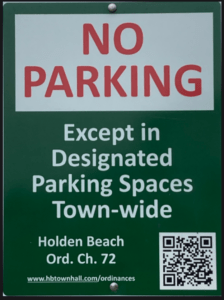
Upon Further Review –
 Bike Lane
Bike Lane
Property owners along Ocean Boulevard were sent a CAMA notice from the DOT
.
Key takeaways:
- Add 7’ asphalt to the south side of existing pavement
- Add 3’ asphalt to the north side of existing pavement
- Recenter the travel lanes
- Create two (2) five (5) foot bike lanes on either side of the road
DOT informed us the cost of the has significantly increased by almost 30%
The good news is that our portion is only an additional $23,000 so far
Previously reported – July 2022
The NC Department of Transportation has informed the town that due to permitting issues raised during their review of the Ocean Boulevard Repaving/Bike Lane Project, construction will not begin in September as previously planned. Construction is now scheduled to start after the first of the year. The project will still have a completion date of Memorial Day.
Previously reported – June 2022
Execution of the agreement with DOT is required to construct the Ocean Boulevard Bike Lanes Project this fall in conjunction with the resurfacing of Ocean Boulevard. The project is estimated at $1,722,364 of which 42% or $723,393 is the Town’s share. The remaining 58% or $998,971 is funded by the Grand Strand Area Transportation Study (GSATS). The Board authorized the execution of the Transportation Improvement Agreement with the Department of Transportation.
Bike Lane Letters (04/21/22)
Town staff contacted the Department of Transportation after numerous homeowners reached out to us concerned that they had not received a letter with information on the upcoming bike lane/paving project. We were advised that only those property owners whose property is adjacent to the proposed bike lane construction where that construction intersects the Ocean Erodible Area of Environmental Concern (jurisdiction of NC Division of Coastal Management) have been sent the certified letter/attachments. This is only a small portion of the project area (approximately 150 properties) so don’t be concerned if you did not receive a letter. Those property owners that have received the certified letter/attachments can follow the instructions in the letter if they would like to contact someone about the project.
Previously reported – March 2021
David provided the Board with a memo summarizing the information that he gathered since the last meeting. That memo was not included in the agenda packet. He reviewed the process, timeline, and financing. DOT informed him that if we are interested that we need to stay engaged with them. The public has said that they are in favor of having bike lanes. The project is an improvement worth the expenditure especially if we can get help with the funding through grants. They decided to give the project a green light and have David work to keep moving the project forward.
Previously reported – February 2021
Engineer’s estimate for bike lanes are as follows:
Ocean Boulevard West / 5.00 miles / @$1,208,941
Ocean Boulevard East / 1.15 miles / @$403,972
NCDOT now has adequately funding so the resurfacing program for OBW which is scheduled for the spring of 2022. Bike lanes are being proposed on both sides of the road, which will add five feet on each side. This should be coordinated with resurfacing project that is tentatively scheduled already. Our cost would be $1,612,913 which hopefully at least a portion of would be offset by grants. DOT requested verbal feedback in the next 60 days, indicating whether we want to participate in adding bike lanes to the project.
Previously reported – October 2023
DOT Bike Lane Report Presentation » click here
The plan includes bike lanes of 5’ on each side of Ocean Boulevard. It will be an asymmetrical widening, that is 7’ on the south side and only 3’ on the north side where the sidewalk is.
Highland Paving has been awarded the contract and has already met with the town staff
Surveying has already been completed and work on storm water issues will begin in November
Paving prep work will start once that is completed, probably sometime in December
They anticipate that the actual paving project will be done beginning March
Work will be done starting from the west end of the island working east
They are still committing to completing the project before Memorial Day
THB Newsletter (10/20/23)
Ocean Boulevard Resurfacing and Bike Lane Project
Highland Paving met with the Department of Transportation and staff last week to discuss the upcoming project. They communicated that storm water work will begin in November. The subsequent paving prep work, which we are thinking will take place in December, will involve removal of the road shoulders, three feet on the north side of the road and seven feet on the south side of the road. We do not know where the contractor will be at any given point in time. Property owners are responsible for removing any material (landscape timbers/specialty rock, etc.) from the construction area that they don’t want hauled off by the contractor. Replacement material will be generic ABC stone. Mailboxes will be moved/reset, but if they fall apart, the contractor will install a generic replacement. We are forecasting the paving won’t begin until March/April, with the project being completed by Memorial Day.
Corrections & Amplifications –

Odds & Ends –
 From Colin Campbell at WUNC comes this report about North Carolina’s legislature exempting itself from the public transparency law that will still apply to the governor, mayors across the state, and agency leaders. (Thanks to reader Minta P for flagging this.) “North Carolina law allows the public to obtain a variety of documents from state government and its elected officials. Anyone can get copies of emails sent to an elected official or access their calendar to see when they met with lobbyists,” Campbell wrote. But now “the lawmakers themselves can decide what to make public — and which documents to delete or toss in the shredder.”
From Colin Campbell at WUNC comes this report about North Carolina’s legislature exempting itself from the public transparency law that will still apply to the governor, mayors across the state, and agency leaders. (Thanks to reader Minta P for flagging this.) “North Carolina law allows the public to obtain a variety of documents from state government and its elected officials. Anyone can get copies of emails sent to an elected official or access their calendar to see when they met with lobbyists,” Campbell wrote. But now “the lawmakers themselves can decide what to make public — and which documents to delete or toss in the shredder.”
Freedom of information laws — both federal and at the state level — are a powerful tool for unearthing bad behavior. This is a retreat from the public’s right to know.
NC lawmakers exempt themselves from public records laws while Democrats blast ‘secret police’ powers
North Carolina’s legislature is now exempt from the public records law that governs other branches of government. The change is a last-minute addition to the state budget, and it comes alongside a major expansion of the legislature’s ability to seize documents from state agencies and private contractors. North Carolina law allows the public to obtain a variety of documents from state government and its elected officials. Anyone can get copies of emails sent to an elected official or access their calendar to see when they met with lobbyists. That transparency law still applies to the governor, local mayors and agency leaders across the state. But a provision in the budget bill now cuts off that access for anyone seeking records from state legislators and their staff. It says the lawmakers themselves can decide what to make public — and which documents to delete or toss in the shredder. “They have every incentive to leave you in the dark if there’s a record of something unflattering or that might not be politically advantageous to them,” said Brooks Fuller, executive director of the N.C. Open Government Coalition. “And my belief is that that’s probably what most legislators are going to do.” Legislative leaders wouldn’t say who asked for the provision to be added to the final draft of the budget. But House Speaker Tim Moore defended the change. “I think we received a public records request to every member of the General Assembly for every bit of correspondence for the last three years,” he said. “Now imagine how much that would cost to produce that. We get some kinds of requests like that routinely, that make no sense, that aren’t designed to get information. They’re designed to add to cost and harassment; it ends up costing the taxpayer’s money. So how do you balance that, with ensuring that the public has full transparency?” The longstanding public records law allows government agencies to charge a fee when a records request involves an “extensive” amount of staff resources. “Just because it’s inconvenient or time consuming or expensive, it’s not a good enough public policy reason to not allow free flow of information,” Fuller said. The move has few defenders outside the Legislative Building. The conservative John Locke Foundation, the N.C. Press Association and many Democrats have called for the language to be repealed. The change also removes transparency from the redistricting process underway this month. In the past, documents used in drawing new congressional and legislative maps were released after the new districts were approved. That won’t happen this year, prompting criticism from Rep. Tim Longest, D-Wake. “It shields precisely those records on matters where folks from both sides of the aisle have said we should be more transparent: Drawing district lines,” Longest said. Moore said the redistricting records may still end up becoming public through lawsuits expected to challenge the maps. As the legislature shuts off access to its internal workings, it’s giving its own staff far more power to get documents and information from other branches of government, as well as private companies that do business with the state. A few years ago, legislative leaders eliminated a nonpartisan agency that reviewed state programs and recommended improvements. That agency was replaced by investigators working directly for the leaders of a legislative panel, known as the Joint, also referred to as Gov Ops. It’s recently probed hurricane recovery programs and high school sports oversight, holding sometimes testy hearings with officials from Gov. Roy Cooper’s administration. A budget provision will let partisan staffers for the commission seize documents and enter offices of state agencies and government contractors. Sen. Graig Meyer, D-Orange, says the access is so broad that the partisan investigators could enter private homes of political opponents without a warrant, if they use their home as the headquarters for a business. He compares it to a spy agency. “The advent of this type of secret policing feels more like opening the door of authoritarianism and should scare us all,” he said, adding that the language requires people contacted by Gov Ops staffers to keep the interaction confidential. “Companies hoping to pursue growth plans in North Carolina may completely avoid our state if they believe that our legislative Gov Ops Gestapo will be digging into their private information or walking into their doors to demand access to their computer systems at any moment.” Republicans dismissed Meyer’s scenarios as hyperbole. They said the new authority for the agency is similar to what the state auditor uses to investigate government spending; the goal is to more effectively look at how state agencies and contractors are overseeing programs like hurricane recovery. “That’s just ridiculous,” Moore said of the ‘secret police’ claim. “There’s no arrest powers. There’s nothing like that.” But Brooks Fuller of the N.C. Open Government Coalition said it’s a concerning shift when paired with the repeal of public records laws. “This means that folks who already enjoy a lot of privilege and a lot of power as elected representatives in state government now have the ability to make public information laws, such as they exist, work for them,” he said. “And meanwhile, they’ve stripped that power away from average folks.” Reporters and others filed a few more requests to get lawmakers’ emails before the change took effect. It could be folks’ last chance for now.
Read more » click here
This and That –
 Fear the deer: Crash data illuminates America’s deadliest animal
Fear the deer: Crash data illuminates America’s deadliest animal
Behold the deer, the deadliest beast in North America. Deer are responsible for the deaths of about 440 of the estimated 458 Americans killed in physical confrontations with wildlife in an average year, according to Utah State University biologist Mike Conover, employing some educated guesswork in the latest edition of “Human-Wildlife Interactions.” Those deer-inflicted fatalities are not, so far as we know, caused by deer-on-human predation. They’re the unfortunate result of more than 2 million people a year plowing into deer with their sedans and SUVs, usually on a two-lane road, often at high speed. You might wonder: Where and when am I most likely to hit a deer? And how can I avoid it? To shed light on this herbivorous hazard, we turned, of course, to data. Specifically, we analyzed more than 1 million animal-vehicle collisions compiled by Calumn Cunningham, Laura Prugh and their colleagues at the University of Washington for a recent paper published in Current Biology. They estimate deer were involved in more than 90 percent of the collisions, which occurred in 23 states between 1994 and 2021. With a few exceptions, the data show deer are at their most dangerous in November. Indeed, the deer threat peaks just before Thanksgiving — typically Nov. 7 through 14 — when you’re about three times more likely to hit a deer than at any other time of year. Experienced deer hunters can probably guess why driving in November can turn into Russian roulette on certain highways and byways: In much of the country, that’s rutting season. And during the rut, deer focus on procreation, not self-preservation. Marianne Gauldin of the Alabama Wildlife and Freshwater Fisheries Division compares rutting bucks to teenage boys. “They are hyper-focused on the opportunity to breed, and they therefore lose some of their wits,” Gauldin said. “They are full tilt looking for does, chasing does and running after does for the opportunity to breed. And they are doing this with tunnel vision … literally running across the road.” Does share similar distractions. They’re either in estrus — hormonally receptive to sex and looking to breed — or fleeing hot-and-bothered bucks until their cycles catch up. Collisions occur more often in states with the most white-tailed deer — which experts say tend to have a shorter, sharper rut than the western mule deer — and in states with long stretches of busy rural roads. Separate insurance claim data from State Farm, which is widely cited in academic research, shows a driver out minding her own business on the wending, bending roads of West Virginia had a 1 in 35 chance of hitting an animal between June 2021 and June 2022, making the Mountain State easily the most dangerous in terms of deer-car collisions. Montana and Michigan were next. D.C. drivers, by contrast, had only a 1 in 907 chance of stopping a buck while driving down Pennsylvania Avenue, or anywhere else. Fun fact: Deer are responsible for at least 69 percent of animal-related accident claims, according to State Farm. Another 12 percent of claims involve unidentified animals, many of which could be deer that bounded off before the driver got a good look at them or were mangled beyond recognition in the crash. The third-most-dangerous animals on the road are undifferentiated rodents, which are cited in 5 percent of all animal-related accident claims. However, State Farm spokesperson Dave Phillips noted that many of the drivers never make contact with said rodent: The vast majority of those accidents occur when motorists swerve to avoid a suicidal squirrel or moseying marmot. Our more calendar-conscious readers will note that peak deer-crash season coincides with another big moment in November: the first week of daylight saving time, which begins the first Sunday of the month. And the University of Washington team has found that the two events are not unrelated. To understand why, we need to spelunk deeper into their data, which breaks new ground by including the exact location, date and hour of all these deer disasters. When we glance at a chart of accidents that includes time of day and time of year, one fact strikes us right between the headlights: Evening, the twilight of each day — especially in November! — is the hour of the Götterdeermmerung. Conveniently for us, the University of Washington scholars used accident coordinates and some basic weather math to calculate exactly when the sun would have risen or set at each location. It turns out that deer danger skyrockets about 30 minutes after sunset and remains extraordinarily elevated for almost half an hour. Those with deer-behavior expertise say drivers should be on high alert as darkness falls in autumn — especially when careening through the deer’s favorite transitional habitats, the forest-edge ecosystem created by roads and other developments. But they urge us to take a lesson from the thousands of people who land in hospitals and body shops each year after attempting to avoid a turtle or chipmunk: If you do see a deer, don’t swerve. “Slow down as much as you can, obviously, coming up to it,” said Karlin Gill of the National Deer Association, a hunting and conservation organization. “But if it’s unavoidable and you’re going to hit the deer, don’t try and swerve out of the way. That can cause an even worse car wreck, and you still might hit the deer regardless.” Deer crashes also rise in the morning, about 30 minutes before sunrise, but the number is significantly lower than after sunset. To understand why, we need to dig deeper into both deer and human activity patterns. Biologist after biologist told us deer are crepuscular, meaning they’re most active at dawn and dusk. When Texas A&M University wildlife scientist Stephen Webb and his colleagues fitted GPS trackers onto white-tailed deer in Oklahoma, they found deer movement peaks at both sunrise and sunset. “Deer, unlike humans, don’t lay down for eight hours at night and then get up and move throughout the day,” said Gill , who, as a hunter, closely examines deer behavior. “They actually go through a cycle where they’ll lay down, bed, get up, eat, lay down, bed, get up, eat, and they’ll do this throughout a 24-hour period.” But if deer are equally active at dawn and dusk, why are they so much more likely to be hit in the evening? To untangle that one, we need to examine another somewhat crepuscular species: the American commuter. Our commutes also peak in the morning and evening, but we’re much more likely to be driving at dusk than we are at dawn, and we stay on the roads even as darkness falls, and the deer start moving — often squarely into our headlights. It’s a matter of visibility. Deer are just as active two hours before dusk as they are two hours after, yet we’re about 14 times more likely to hit a deer after sundown than we are before. And, as Cunningham notes, right at the peak of the whitetail rut, we throw another variable into the stew: We end daylight saving time. Suddenly, as far as the deer are concerned, our 6 p.m. commute happens an hour later. Millions of drivers find themselves contending with lower visibility just as sex hormones flood the local deer population. “It’s like one of the grandest-scale natural experiments that we can come up with, where humans impose these very arbitrary and abrupt changes on the wildlife,” Cunningham told us from his native Tasmania (he’s at the University of Washington as a Fulbright fellow). People living on the far eastern side of a time zone are about 1.35 times as likely to hit a deer as folks on the far western edge, since folks in the east are more likely to be driving home in the dark. Similarly, folks in Northern states, where days are short and darkness rules the winter, are 1.86 times more likely to hit a deer than their friends in America’s sunny South. Taking these effects into account, the University of Washington team estimates that “falling back” causes a 16 percent jump in deer carnage in the weeks after the shift. It’s possible that adopting permanent daylight saving time would thus save the lives of more than 36,000 deer and 33 humans each year. On the down side, chronobiologist Eva Winnebeck of the University of Surrey argues that any gains might be offset by an increase in deaths spurred by the chronic drowsiness that would inevitably set in if our solar-powered circadian rhythms were forced to endure a never-ending disconnect between the sun and clocks set permanently to daylight saving time. Here at the Department of Data, we’ve found a strong connection between happiness and the great outdoors. So, we’re partial to any move that would give us more daylight hours to get out after work and fish, run or dominate the competitive wood-chopping circuit, circadian rhythms be darned.
Read more » click here
Watch out for deer
NCDOT warns motorists across North Carolina to stay alert for deer now that fall has arrived. Every year during late autumn, auto and body shops across the region brace for a bumper crop of business, comprised of an influx of cars with damage from collisions with deer. Beginning in October, roads across the state become hazardous as North Carolina’s deer population fans out, lurking on highway shoulders in search of food and potential mates. It’s the deadliest time of the year for deer, which also pose a particular danger to motorists. Nearly half of vehicle accidents involving white-tail deer occur from October to December. Deer accidents typically begin rising in October, peak in November and begin dropping off after December, according to the Insurance Institute for Highway Safety. Deer are crepuscular mammals, meaning they’re most active at dawn and dusk – which, following the onset of daylight savings time, places them near roads and byways precisely when large numbers of residents are commuting to and from work.
NCDOT has some helpful tips for motorists in regard to deer-vehicle crashes:
- Although it does not decrease the risk of being in a crash, wearing a seat belt gives you a better chance of avoiding or minimizing injuries if you hit a deer or other animal.
- Always maintain a safe amount of distance between your vehicle and others, especially at night. If the vehicle ahead of you hits a deer, you could also become involved in a crash.
- Slowdown in areas posted with deer crossing signs and in heavily wooded areas, especially during the late afternoon and evening.
- Most deer-vehicle crashes occur where deer are more likely to travel, near bridges or overpasses, railroad tracks, streams, and ditches. Be vigilant when passing through potentially risky landscapes.
- Drive with high beams on when possible and watch for eyes reflecting in the headlights.
- Deer often travel in groups, so if you see one deer near a road, be alert that others may be around.
- If you see deer near a road, slow down and blow your horn with one long blast.
- Do not swerve to avoid a collision with deer. This could cause you to lose control of your vehicle, increasing the risk of it flipping over, veering into oncoming traffic, or overcorrecting and running off the road and causing a more serious crash.
Officials say the most crashes occur between 6 p.m. and midnight, accounting for about 45% of the overall total. With the end of daylight savings time at 2 a.m. Sunday, Nov. 1, the time shift increases the chance of deer being by roadways when drivers are traveling in the dark, especially for their evening commute. If your vehicle does strike a deer, officials say do not touch the animal. A frightened and wounded deer can be dangerous or further injure itself. Get your vehicle off the road if possible and call 911.
Read more » click here
Factoid That May Interest Only Me –
Record Number of Billion-Dollar Disasters Shows the Limits of America’s Defenses
The country has been hit by 23 large-scale disasters since January, and hurricane season is far from over.
The United States has suffered 23 billion-dollar disasters so far in 2023, a record for this point in the year that highlights the country’s struggle to adapt to the effects of climate change. The list, compiled by the National Oceanic and Atmospheric Administration, includes the fire in Maui that killed at least 115 people, the deadliest United States wildfire in more than a century; Hurricane Idalia, which struck western Florida as a Category 3 storm; and a storm in Minnesota that dropped hail the size of pingpong balls, cutting off power for more than 25,000 homes and businesses. And that was just last month. In one sense, the growing cost of disasters is unsurprising. The burning of fossil fuels is causing air and water temperatures to increase, which in turn makes it possible for hurricanes to become stronger, rainfall to become more intense and wildfires to spread faster. The NOAA data, which tracks the number of billion-dollar disasters in the United States, adjusted for inflation, shows a relatively steady upward march, from three such disasters in 1980 to 22 in 2020. The current year has already exceeded that record set in 2020. But the growing toll demonstrates more than just the effects of global warming. Since Hurricane Sandy in 2012, the federal government has spent billions of dollars trying to make American communities more resilient to the effects of climate change through investments in sea walls, storm drains, building science, forest management and other strategies. The rising number of huge, costly disasters shows the limits of those efforts. The Biden administration, aware of those concerns, is increasing resilience spending. The Federal Emergency Management Agency “has provided historic levels of mitigation funding to help communities build resilience,” Jeremy Edwards, an agency spokesman, said in a statement. Last week, FEMA designated almost 500 communities as “disaster resilience zones,” which are eligible for increased federal funding. “Rural communities really are on the front lines of climate change,” said Kristin Smith, a researcher at Headwaters Economics, a policy consulting nonprofit group, who has studied the distribution of federal resilience funding. “But many don’t have the resources to do anything about it.” The Biden administration has also tried to persuade state and local governments to impose stricter building codes, which can drastically reduce the damage from flooding, hurricanes, wildfires and other disasters. But stricter codes increase the upfront cost of homes, a powerful disincentive as much of the nation suffers through a housing shortage. Despite the federal government’s efforts, only about one-third of American jurisdictions use the most recent building codes, according to the Institute for Building and Home Safety, a research group funded by the insurance industry. That industry has plenty of reason to be concerned. As disasters become more frequent and expensive, insurers have increasingly stopped writing new coverage in high-risk states like Florida, California and Louisiana. The Maui wildfires raised questions about the viability of the insurance market in Hawaii as well. As insurance becomes either unaffordable or unavailable, the result can be broader economic decline, pushing down home values and local property-tax collection. That downward cycle, which until recently had been limited to especially calamity-prone parts of the United States, risks becoming more widespread as high-cost disasters become more frequent. Amy Chester, managing director of Rebuild by Design, a nonprofit group that helps communities recover from disasters, said the United States needed to take climate adaptation more seriously. That means not just spending money on resilience, but also requiring state and local governments to build infrastructure to higher standards. Adapting to climate shocks also means “having real conversations” about helping people leave vulnerable areas, Ms. Chester added. “Maybe we can’t live everywhere that we’re living.” In the meantime, she noted that billion-dollar disasters don’t just affect the people who live through them. As federal disaster costs rise, Ms. Chester said, “we are all paying for this.”
Read more » click here
Hot Button Issues –
Subjects that are important to people and about which they have strong opinions

Climate
For more information » click here
.
There’s something happening here
What it is ain’t exactly clear
Earth is on track for its hottest year yet, according to a European climate agency
After a summer of record-smashing heat, warming somehow got even worse in September as Earth set a new mark for how far above normal temperatures were, the European climate agency reported Thursday. Last month’s average temperature was 0.93 degrees Celsius (1.7 degrees Fahrenheit) above the 1991-2020 average for September. That’s the warmest margin above average for a month in 83 years of records kept by the European Space Agency’s Copernicus Climate Change Service. “It’s just mind-blowing really,” said Copernicus Director Carlo Buontempo. “Never seen anything like that in any month in our records.” While July and August had hotter raw temperatures because they are warmer months on the calendar, September had what scientists call the biggest anomaly, or departure from normal. Temperature anomalies are crucial pieces of data in a warming world.
“This is not a fancy weather statistic,” Imperial College of London climate scientist Friederike Otto said in an email. “It’s a death sentence for people and ecosystems. It destroys assets, infrastructure, harvest.” Copernicus calculated that the average temperature for September was 16.38 degrees Celsius (61.48 degrees Fahrenheit), which broke the old record set in September 2020 by a whopping half-degree Celsius (0.9 degrees Fahrenheit). That’s a huge margin in climate records. The hot temperatures stretched across the globe, but they were chiefly driven by persistent and unusual warmth in the world’s oceans, which didn’t cool off as much in September as normal and have been record hot since spring, said Buontempo. Earth is on track for its hottest year on record, about 1.4 degrees Celsius (2.5 degrees Fahrenheit) warmer than pre-industrial times, according to Samantha Burgess, Copernicus’ deputy director. This past September was 1.75 degrees Celsius (3.15 degrees Fahrenheit) warmer than the mid-1800s, Copernicus reported. The world agreed in 2015 to try to limit future warming to 1.5 degrees Celsius (2.7 degrees Fahrenheit) warming since pre-industrial times. The global threshold goal of 1.5 degrees Celsius is for long-term temperature averages, not a single month or year. But scientists still expressed grave concern at the records being set. “What we’re seeing right now is the backdrop of rapid global warming at a pace that the Earth has not seen in eons coupled with El Nino, natural climate cycle” that’s a temporary warming of parts of the Pacific Ocean that changes weather worldwide, said U.S. climate scientist Jessica Moerman, who is also president of the Evangelical Environmental Network. “This double whammy together is where things get dangerous.” Though El Nino is playing a part, climate change has a bigger footprint in this warmth, Buontempo said. “There really is no end in sight given new oil and gas reserves are still being opened for exploitation,” Otto said. “If you have more record hot events, there is no respite for humans and nature, no time to recover.” Buontempo said El Nino is likely to get warmer and cause even higher temperatures next year. “This month was, in my professional opinion as a climate scientist – absolutely gobsmackingly bananas,” climate scientist Zeke Hausfather said on X, formerly known as Twitter.
Read more » click here

Flood Insurance Program
For more information » click here
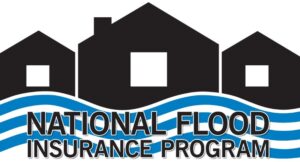
National Flood Insurance Program: Reauthorization
Congress must periodically renew the NFIP’s statutory authority to operate. On September 30, 2023, the President signed legislation passed by Congress that extends the National Flood Insurance Program’s (NFIP’s) authorization to November 17, 2023.
Congress must now reauthorize the NFIP
by no later than 11:59 pm on November 17, 2023.
Flood-Insurance Program Faces a Backlash—and a Deadline
Home-purchase closings could be derailed if it lapses
A federal program that provides critical flood insurance is set to lapse unless renewed by the end of the month, potentially stranding new home buyers in need of coverage. The National Flood Insurance Program provides a safety net for the increasing number of communities that are vulnerable to flooding and might not have access to any other coverage. Now lawmakers are deadlocked over extending the program, which is facing a backlash over a new pricing model intended to make premiums better reflect a home’s risk. “The only thing worse than what we have is nothing,” said Sen. John Kennedy (R., La.), whose bill to extend the program by one year was blocked last week. Congress may find a way to renew the program before it lapses on Oct. 1 or shortly after, as in years past, through legislation that is either separate from or part of the budget fight to prevent a government shutdown. The deadline comes at a critical juncture for the 55-year-old program. The Federal Emergency Management Agency is being sued by 10 states that want to block the program’s revamped pricing, which was intended to help address its decadelong funding shortfalls and to prevent homeowners in relatively low-risk areas from continuing to subsidize those in flood-prone ones. The new pricing will take several years to be fully implemented and result in rate hikes for two-thirds of the program’s 4.7 million policyholders, according to the Government Accountability Office. The states suing FEMA say the new rates could drive people out of flood zones, slam property values and even lead to people losing their homes because they can no longer afford insurance that is a condition of their mortgages. Average annual premiums will eventually more than double in 12 coastal and landlocked states under the revamp, according to a report this week by First Street Foundation, a research firm. The county with the steepest increase is in Louisiana, where the average premium in Plaquemines Parish will surge more than sixfold to $5,431 from $842 in coming years once the new premiums are in full effect, according to First Street. “Flood insurance policies have become their own natural disaster,” said Jeff Landry, the attorney general for Louisiana who is leading the states’ lawsuit. Other states where average premiums more than doubled include hurricane-prone Florida and Mississippi, as well as Kentucky, South Dakota and West Virginia. David Maurstad of the National Flood Insurance Program said that FEMA doesn’t have the authority to consider affordability when setting premiums but that the agency “continues to work with Congress to examine flood insurance affordability options.” Previously, premiums were based on an outdated model that FEMA said no longer accurately reflected a home’s risk of flooding. Critics said the cheap insurance encouraged people to buy pricey homes in flood-prone areas, in part by repeatedly bailing them out. More than 3,000 properties had 10 or more claims from 1978 through 2022, according to FEMA. Nearly two-thirds of those were in five states: Louisiana, Texas, New Jersey, Missouri and New York. To help shore up its funding, FEMA last year asked Congress to consider letting it drop coverage on properties that received four or more claim payments of at least $10,000. Congress has yet to take any action. Since the program caps rate increases at 18% a year, it will take until 2037 before the new premiums are being charged for 95% of current policies, the GAO estimated. That delays the full impact of rate increases for several years for policyholders but leaves the program with $27 billion less in premium revenue than it otherwise would have. Already, the program’s failure to charge adequate rates for years has dug it deep into debt. It is paying $1.7 million in interest a day to the Treasury on $20.5 billion in loans, even after Congress forgave it $16 billion of debt in 2017. Meanwhile, the program has lost almost a million policyholders since 2009, despite floods becoming more frequent and costly. In counties affected by Hurricane Idalia last month, fewer than one in five homes on average had federal flood insurance, according to an analysis for The Wall Street Journal by private insurer Neptune Flood. A failure by Congress to renew the program wouldn’t stop claims from being paid. But it could affect home purchases in high-risk flood zones and derail thousands of closings in the peak of hurricane season, according to the Insurance Information Institute, an industry group. In the last six years, lawmakers have allowed the program to lapse briefly three times, according to FEMA. It isn’t yet clear how lawmakers will try to extend the program. A renewal could be included as a provision in any temporary funding legislation to keep the government running. Sen. Kennedy of Louisiana is also expected to again try and pass his legislation for an extension. His attempt last week was blocked by Sen. Mike Lee (R., Utah), who said he wasn’t willing to agree to “yet another hollow promise” of reforms. “It’s a broken subsidy program,” Lee said.
Read more » click here

GenX
For more information » click here
Lawsuit against Chemours, DuPont moves forward following class action certification
A lawsuit against Chemours and DuPont is moving forward after a federal judge granted class action certification to over 100,000 North Carolina residents. According to Cohen Milstein Sellers & Toll PLLC, the residents “allege that The Chemours Company (Chemours) and DuPont Chemical (DuPont) illegally discharged toxic wastewater containing PFAS and GenX chemicals, aka ‘forever chemicals,’ from its Fayetteville Works plant into the Cape Fear River, failed to inform residents, failed to inform government officials after learning of its damaging impacts, and continued these harmful practices for decades. The plaintiffs claim that they unknowingly consumed drinking water contaminated with these chemicals, that they now suffer from and face the risk of serious health problems, and that Chemours and DuPont should pay the cost of eliminating the contamination of these PFAS chemicals from their homes.” The class certification was granted by United States District Judge James Dever III on Wednesday, Oct. 4. “The class action was first brought in 2017 in the Eastern District of North Carolina,” the announcement states. “In 2018, Cohen Milstein and Susman Godfrey were court appointed Interim Co-Lead Class Counsel. “Since filing the case, Cohen Milstein and Susman Godfrey have provided information to DEQ in support of the development and enforcement of the consent order while seeking additional relief through the class action.” This lawsuit against Chemours and DuPont joins other cases focusing on the contamination of the Cape Fear River. Earlier this year, Chemours, DuPont and Corteva agreed to a more than a billion-dollar settlement amid complaints they polluted drinking water across the country. Additionally, in March, the Cape Fear Public Utility Authority filed a lawsuit to prevent Chemours, DuPont and related companies from restructuring to avoid liability for damage caused by PFAS at the Fayetteville Works plant. The full order can be accessed here. More information about Cohen Milstein, including the class action case, can be found here.
Read more » click here

Homeowners Insurance
For more information » click here.
.
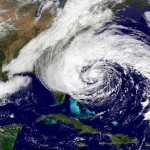
Hurricane Season
For more information » click here
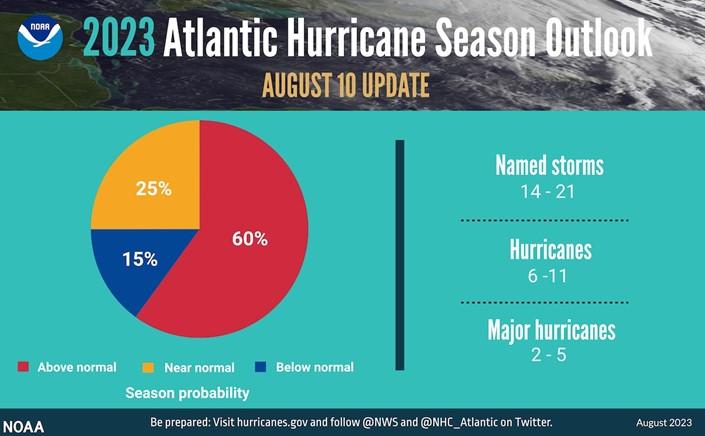
THE 5 HURRICANE CATEGORIES, EXPLAINED
It’s a number attached to every hurricane, crucial to emergency response teams and city officials to mobilize preparedness: the Saffir-Simpson Hurricane Wind Scale, characterized by five categories. The scale only measures one component of a hurricane: the wind. Each category is divided by a range of wind speeds, estimating potential damage and impacts on properties. This year, the National Oceanic and Atmospheric Administration predicted an above-normal hurricane season. Record-breaking warm water in the Atlantic has increased tropical storm and hurricane activity. Five hurricanes have swept through the Atlantic this year. Before the season concludes at the end of November, the Atlantic may experience a total of six to 11 hurricanes. Three of the hurricanes so far this year were considered major — Category 3 or above — and NOAA predicts that there could be up to two more.
An imperfect scale
The scale used to include other impacts like storm surge ranges and flooding, but they were removed to reduce public confusion, according to the National Hurricane Center. “Now the wind is the scale’s strength — but also its weakness,” said Gina Eosco, the division chief and social science expert at the Weather Program Office for NOAA. “It ends up missing the myriad of other risks that are oftentimes more serious in a hurricane, such as storm surge,” she said. Scientists and forecasters are still learning how individuals perceive and adjust to risks as threats develop during hurricanes, Eosco said. Some experts hypothesize that people anchor to the storm category and don’t adjust for other risks. “It is very misleading because somebody may not evacuate for a tropical storm or a Category 1 hurricane, but we have seen time and time again that these storms have had a lot of impact,” said Jennifer Collins, a hurricane researcher at the University of South Florida. Each storm has its own personality, and there isn’t always a direct correlation between category and damage. This means a Category 1 hurricane could be more devastating than a Category 3. “A simple one, two, three, four, five scale is not sufficient to communicate the threat that a hurricane brings,” said Jeff Masters, a hurricane expert for Yale Climate Connections.
Here is other extreme weather that’s associated with a hurricane:
STORM SURGE
As a hurricane barrels across the open ocean, strong winds drive the water forward. Once the water reaches the shore, it combines with normal tides and creates the storm surge. Storm surge is the leading cause of hurricane-related deaths in the United States, according to the National Weather Service. “The Hurricane Center realized this is a problem because [the scale] didn’t speak to storm surge in particular — which is the threat that kills the most people from hurricanes — so they introduced a separate storm surge watch and storm surge warning product,” Masters said. In some cases, storm surge is responsible for the most hurricane destruction. Hurricane Ike made landfall as a Category 2 hurricane with walloping sustained winds of 110 mph in September 2008, with hurricane-force winds extending 125 miles from the center. But the wind wasn’t what caused the most damage. The storm had a surge of more than 20 feet, the largest storm surge on record for a Category 2 hurricane. Imagine rushing water the height of two basketball hoops stacked on top of each other barreling toward homes, cars and buildings. The storm claimed 195 lives and resulted in $30 billion in damage. It wasn’t even considered a major hurricane.
RAIN AND INLAND FLOODING
Not to be mistaken with storm surge, the other main cause of flooding during a hurricane is rain. While some inland communities assume they are spared from the wrath coastal communities endure, storm impacts can occur tens to hundreds of miles outside of the storm’s eye. During hurricanes, excessive amounts of rain cause streams and creeks to overflow their banks and clog storm drains and sewage systems, which results in devastating flooding. Hurricane winds weaken as they move over land, but the torrential rains don’t stop. Inland cities, with vast amounts of concrete and impermeable surfaces, also have a high risk of excess runoff and flooding. Hurricane Harvey made landfall in Texas as a Category 4 with maximum wind speeds surpassing 130 mph in August 2017. But by the next day, the hurricane fell to a Category 1 and eventually was considered a tropical storm. Yet the storm wasn’t done. Instead of moving on, Harvey stalled over Texas for days. In the end, the slow-moving storm unloaded 33 trillion gallons of water along the Gulf of Mexico and became the second costliest storm in U.S. history. An unprecedented 60 inches of rain fell in Southeast Texas, producing devastating and deadly flash and river flooding, according to the Weather Service. A year after Harvey, Florence made landfall as a Category 1 hurricane and brought destructive flooding across the Carolinas. Florence was responsible for the heaviest rainfall ever recorded from a tropical cyclone in both South Carolina and North Carolina, according to the Hurricane Center. Twenty-two people died due to direct impacts from Florence — 17 deaths of them from inland flooding. Damage totals exceeded $20 billion. Florence, which peaked as a Category 4 hurricane over the ocean, had been downgraded to a tropical storm when it dropped most of its rain.
TORNADOES
The last risk people worry about when thinking about hurricanes is tornadoes. The severe spin from hurricane systems, coupled with atmospheric instability and wind shear, creates perfect conditions for tornadoes. Both hurricanes and tornadoes cause damage due to strong rotating winds, so it’s not surprising that a large rotating system could also produce twisters. Tornadoes generally start within thunderstorms embedded in the outer rain bands of hurricanes, according to the Weather Service. But sometimes they form near the eyewall, which is the ring of destructive winds that surround the storm center. In September 2004, Hurricane Ivan unleashed a damaging storm surge, inland flooding and powerful wind gusts spanning Alabama to Florida. But that wasn’t the end of its impact. The Category 3 hurricane was most notable for its unprecedented tornado outbreak. About 120 twisters touched down from Florida to Pennsylvania — across nine different states — over the course of three days. Virginia alone experienced a record-breaking 38 tornadoes across the state. Overall, the tornadoes from Ivan were responsible for eight deaths and 17 injuries, according to the Weather Service.
SIZE
The size of a hurricane matters. A larger hurricane will tend to produce a more severe storm surge as well as stronger winds and heavier rain over a larger area. But the storm category doesn’t take size into account. One of the ways hurricanes expand is through a process known as an eyewall replacement cycle. During this process, the inner eyewall collapses as a much larger outer eyewall forms around it, often resulting in a bigger hurricane. Not long before striking land last year, Hurricane Ian underwent an eyewall replacement cycle, enlarging the storm substantially. It made landfall as a Category 4 hurricane very close to where Hurricane Charley did at roughly the same intensity in 2004. But Ian was a much larger storm and thus had more severe impacts. Ian’s catastrophic surge, record-breaking inland flooding and damaging winds propelled it to become the costliest hurricane in Florida’s history and the third-costliest hurricane in the United States, according to the Hurricane Center.
Here are some tips to help you stay safe this hurricane season:
- Prepare your emergency supply kit: Include nonperishable food, a generator in case of power outages, important identification information, essential medications and cash.
- Save water: Fill your tub, sinks or containers with drinking water in case public water systems become compromised.
- Protect your home: Board windows with storm shutters or plywood to protect them from wind damage.
- Secure your surroundings: Clear any outdoor objects that could be picked up by the wind.
- Trim weak tree branches that could fall on your home or car. Make sure drains, gutters and downspouts are cleared to prevent flood risks or mold.
Read more » click here
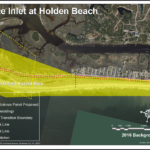
Inlet Hazard Areas
For more information » click here
.
Lockwood Folly Inlet
For more information » click here.

Seismic Testing / Offshore Drilling
For more information » click here.

Offshore Wind Farms
For more information » click here
Things I Think I Think –
 Eating out is one of the great little joys of life.
Eating out is one of the great little joys of life.
Restaurant Review:
The Dinner Club visits a new restaurant once a month. Ratings reflect the reviewer’s reaction to food, ambience and service, with price taken into consideration.
///// August 2023
Name: Bento Box
Cuisine: Contemporary Asian
Location: 1121-L Military Cutoff Road, Wilmington NC
Contact: 910.509.0774 / https://www.bentoboxsushi.com/
Food: Average / Very Good / Excellent / Exceptional
Service: Efficient / Proficient / Professional / Expert
Ambience: Drab / Plain / Distinct / Elegant
Cost: $26 Inexpensive <=20 / Moderate <=26 / Expensive <=35 / Exorbitant <=60
Rating: Two Stars
Bento Box, located in Mayfaire Town Center, has been serving Wilmington since 2006. They offer a diverse Asian menu in a relaxed comfortable environment. The name, The Bento Box, means lunch box. The name also signifies the smaller portions of many different flavors, and the menu is designed to encourage sharing. The main focus of the restaurant is on the sushi bar. It’s a very busy place, it was jammed on a Tuesday night, if you want to eat there you should call ahead for reservations. Apparently, they currently have staffing issues and we had to wait way to long for our food to be served. Although we enjoyed the dining experience at this place, I’m sorry to say that we were disappointed.
Editor’s note –
After our pandemic hiatus we discovered that the old price guidelines were obsolete
All of our previous restaurant reviews have been updated with current menu prices
Book Review:
Read several books from The New York Times best sellers fiction list monthly
Selection represents this month’s pick of the litter
 THE INVESTIGATOR by John Sandford
THE INVESTIGATOR by John Sandford
After more than thirty (30) novels in the long-running Prey series, featuring storied U.S. Marshal Lucas Davenport, and thirteen (13) more featuring Davenport’s colleague Virgil Flowers, Sandford has created another series spinoff with Davenport’s adopted daughter Letty. Introduced as a child in 2003, readers of the series are well acquainted with her, via flashbacks the story intersperses events from her childhood to catch up readers who are unfamiliar with her. In another of Sandford’s patented investigation/action formula, the plot prominently features two (2) things most of us are familiar with far-right militias and immigration. Letty looks into oil thefts in Texas, in conjunction with the Department of Homeland Security, that is part of a domestic-terrorist plot. Like her father, Letty is willing to do whatever needs doing, more interested in justice than the law.
 DARK ANGEL by John Sandford
DARK ANGEL by John Sandford
The sequel to The Investigator, Letty the adopted daughter of Lucas Davenport, takes on an undercover assignment. The Department of Homeland Security and the National Security Agency have tasked her with infiltrating a dangerous group of freelance hackers, known only as Ordinary People. Along the way Letty and her friends switch from trying to bring down the organization to trying to protect it. She realizes that her secret assignment is to hack into the Russian train schedules as Russia plans to invade Ukraine.
That’s it for this newsletter
See you next month
Lou’s Views . HBPOIN
. • Gather and disseminate information
. • Identify the issues and determine how they affect you
. • Act as a watchdog
. • Grass roots monthly newsletter since 2008


